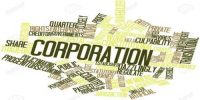Business communicators have a kind of tools to choose from and must use those tools carefully and with consideration of their audience and their intended communication goals. Effective business communicators will find that their efforts pay off in better relationships and business success.
Characteristics of business communication:
- Segmented
Even in small organizations, it is wrong to think that all employees will have the same requirements, interests, and desires when it comes to business communication. Effective business communication is segmented to meet the needs of specific audiences. Employees working in an administrative setting, for instance, will have different needs and different access to information than employees working in a manufacturing environment.
- Specific
Generic business communication meets the needs of anyone. Effective business communication is specific. The more specific communication is, the more it meets the needs of its audience, says Lin Grensing-Pophal, author of “Marketing with the End in Mind”.
- Accurate
When information is inaccurate it loses its credibility. The sender of the information also loses credibility. Effective business communication is accurate in terms of the content conveyed and in terms of simple things that include grammar, spelling, and punctuation.
- Timely
Employees need to know what is going on in their organizations and in the external environment that impacts them. Today’s and #039 technology-driven environment makes it more challenging than ever before for businesses to communicate with employees in a timely manner, but it is critical for effective business communication, says Greasing Alpha.
- Frequent
It cannot be assumed that a message has gotten across if it is sent just one time. Effective business communication occurs frequently to ensure that it has been received by all employees. Employees leave. new employees join the company and employees transfer from one role to another, requiring new and updated information.
- Multi–Channel
Effective business communication needs to be sent through a broad variety of channels to ensure that it is received by employees in different settings. Businesses, fortunately, have a variety of channels to choose from–from the traditional (print, bulletin boards, meetings) to the new-technology (email, blogs, social media sites).
- Face-to-Face
Face-to-face communication is still the most effective, says Creasing Alpha, and should be used whenever possible and practical. Of course; in very large organizations this can be challenging, but even then, alternatives may include video conferencing or the use of webinars.
- Two-Way
Employees need the opportunity to share their feedback, opinions, and thoughts with managers and employers. Effective business communication offers the opportunity for two-way. communication to benefit employees and employers.














